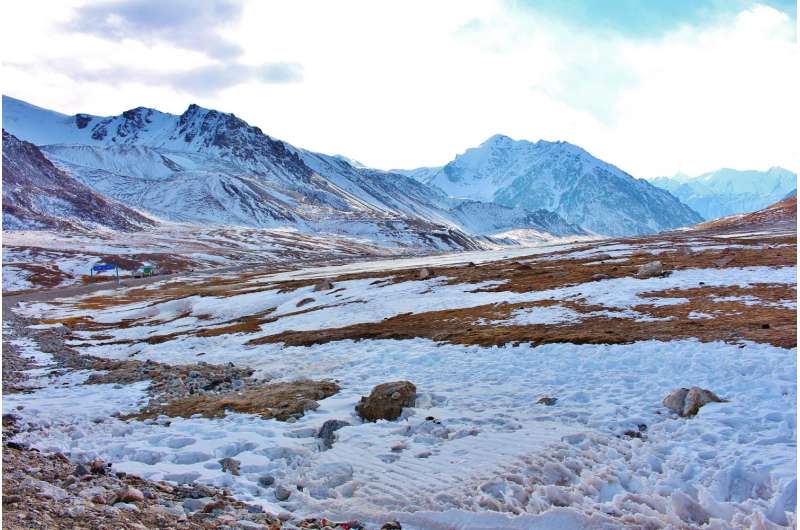Observational evidence of Karakoram anomaly

Stable or marginal mass loss dominating in Karakoram, known as the Karakoram Anomaly, has been reported widely through remotely sensed glacier surface elevation variations of either points (satellite laser altimetry) or surface (digital elevation models).
Because of the rugged terrain and challenges involved in field surveys, long-term ground observational data on Karakoram is sparse. In particular, the measurements of the ice thickness in High Mountain Asia are few, though it is an important parameter to verify ice volume and investigate glacier mass balance.
Based on the first survey by China-Pakistan Batura Glacier Investigation Group in 1974-1975, an international team led by Prof. ZHANG Yinsheng from the Institute of Tibetan Plateau Research (ITP) of the Chinese Academy of Sciences revisited Batura Glacier and conducted updated measurements of the glacier surface elevation and ice thickness for this large valley glacier of Karakoram.
Their study, titled "Post-20th century near-steady state of Batura Glacier: observational evidence of Karakoram Anomaly," was published in Scientific Reports.
The team carried out continuous glacier observations in the Upper Indus Basin, also known as the Pakistan Water Tower, for many years.
The researchers used the results of ground penetrating radar (GPR) measurement to improve the accuracy of an ice thickness distribution model and estimated the ice volume of Batura Glacier precisely.
They also investigated the variations of tongue-averaged surface mass balance using multi-source data via mass conservation equation.
"We observed a marginal thinning in Batura during 2000-2016, with a changing rate in glacier surface elevation of -0.12 ± 0.27 m yr-1. This indicated that the mass gain in the accumulation area nearly compensated the mass loss in the ablation area," said GAO Haifeng, lead author of the study.
The research team also found a steady rate of surface decrease and no significant velocity change in the Batura tongue, implying an absence of significant variation during the past 40 years. Moreover, the tongue averaged mass balance diminished by more than half from the 1970s to the 2010s.
"It can be inferred of a near-steady state of Batura Glacier since 2000, which provides an evidence for the "Karakoram Anomaly,'" said GAO Haifeng.
More information: Haifeng Gao et al. Post-20th century near-steady state of Batura Glacier: observational evidence of Karakoram Anomaly, Scientific Reports (2020). DOI: 10.1038/s41598-020-57660-0
Journal information: Scientific Reports
Provided by Chinese Academy of Sciences





















